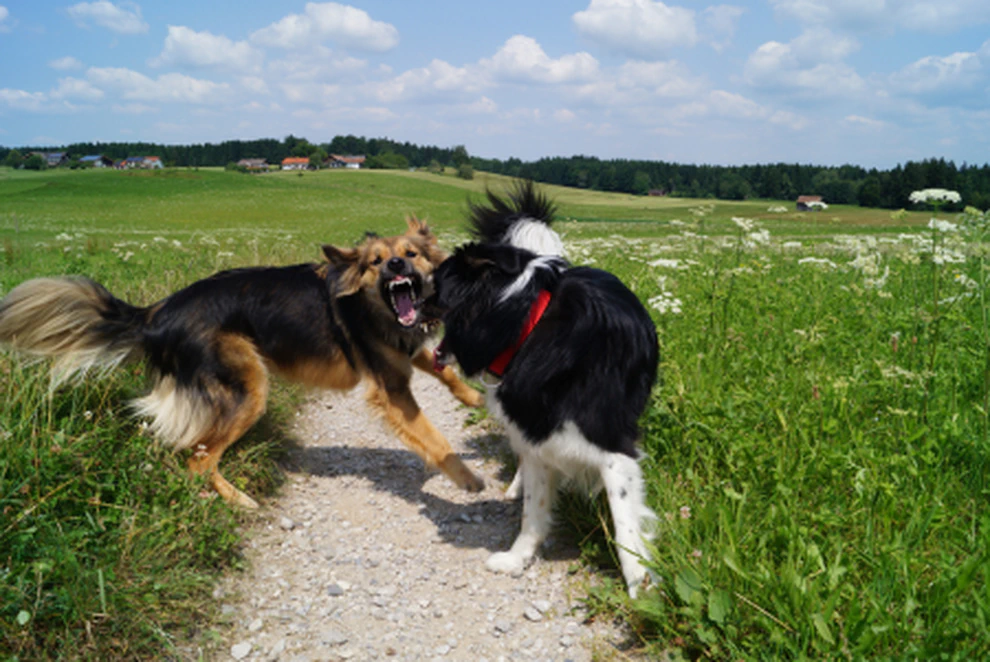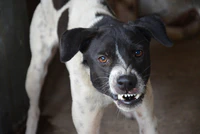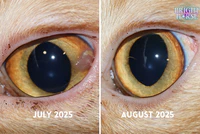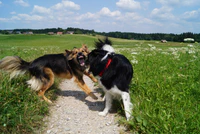What It Means and How to Help
Reactivity between dogs can be tough to deal with. Walks feel stressful, greetings are unpredictable, and the pressure to make your dog “social” can feel overwhelming. A simple stroll around the neighbourhood can turn into a carefully planned route to avoid other dogs.
But it’s important to understand: these actions are communication, not character flaws.
Your dog is not trying to dominate, embarrass, or betray you they’re trying to tell you something. And with the right knowledge and support, you can help them feel safer and more confident in the presence of people.
Dogs don’t actually want to vocalise or react as much as we might think. Barking, lunging, and growling are not their go-to choices they’re high-cost behaviours that expend a lot of energy and calories.
What’s often labelled as aggression is really a dog trying to communicate. These behaviours are misunderstood, and it’s easy to feel judged. But when we understand what our dogs are trying to tell us—and why—they start to make more sense. This is how we help them feel safer and more confident.
What Does Dog-Dog Reactivity Look Like?
Reactivity between dogs doesn’t always look the same. Some dogs bark, growl, or lunge as soon as they spot another dog. Others freeze, stare, or duck behind their guardian.
Some dogs seem friendly at first, then react when another dog comes too close. Or they might look calm until suddenly they explode with barking or pulling. These behaviours are confusing and often embarrassing, especially in public. But each one has a purpose—your dog is asking for space or trying to protect themselves because they feel uncomfortable or unsafe.
It’s important to remember: dogs don’t want to vocalise or react like this—they do so when they feel like they don’t have another choice. These are high-cost behaviours that take energy and create stress.
Why Does It Happen?
Reactivity usually comes from how a dog feels, not from being stubborn or dominant. Dogs react because of fear, stress, frustration, or confusion. When a dog barks or lunges, they may be saying: “Please move away—I don’t feel safe,” or “I need more space.”
We call these distance-increasing behaviours—a way for your dog to tell others to back off. These reactions are not about being a “bad dog”—they are signals that your dog is overwhelmed.
Some dogs have had bad experiences with other dogs in the past. Others weren’t exposed to enough safe, positive interactions when they were young. And sometimes, dogs just feel frustrated—maybe they want to greet the other dog but the leash is holding them back. This is called barrier frustration, and it can make a dog’s energy build up until it comes out as reactivity. Genetics can also play a role; some breeds or individuals may be more naturally alert or sensitive to their environment, which can increase the likelihood of reactive responses.
What Doesn’t Help
Many older training methods make things worse. Pulling on the lead, yelling, or using tools like prong or shock collars might stop your dog’s behaviour for a moment, but they don’t fix the real problem. In fact, they can make your dog more scared or frustrated.
When your dog learns that seeing another dog means something scary will happen, they’ll feel worse—and act out more. These methods also harm the bond between you and your dog, making progress harder.
Reacting with punishment shouting, leash corrections, or other aversives can make things worse. These responses increase stress, lower trust, and often suppress behaviour without solving the root problem. In behavioural science, punishment refers to anything that reduces the likelihood of a behaviour happening again.
- Positive punishment means adding something unpleasant after a behaviour for example, jerking the leash when a dog barks.
- Negative punishment means taking something away the dog wants for instance, ending a walk when the dog pulls.
While these methods can stop a behaviour in the moment, they often do so by increasing fear or confusion, which damages the relationship and doesn’t address the cause of the behaviour. Instead of teaching the dog what to do, punishment simply tells them what not to do often in a way that makes the original problem worse.
What Does Help
The first step is helping your dog feel safer. This means giving them more space, avoiding crowded areas, and choosing quiet, familiar walking routes. You can also use tools like harnesses or head collars to guide them gently without pain. These changes reduce stress and give you more control while you work on deeper behaviour changes.
Then we teach your dog better ways to cope. For example, looking at you instead of reacting when they see another dog, or learning to walk calmly past a trigger. We also work on how your dog feels about other dogs. By using slow, positive experiences—called counter-conditioning—we can help them stay relaxed when another dog is nearby.
Tracking your dog’s progress with a behaviour diary can help too. Note what happened before, during, and after each interaction. This can help you and a behaviour professional spot patterns and identify triggers.
And always, rule out pain. If your dog’s behaviour has changed suddenly or appears without a clear pattern, it’s essential to consult your vet. Medical issues like joint pain, skin sensitivity, or even internal discomfort can contribute to reactivity.
What You Can Do
Instead, here’s how you can begin to make a real difference:
Book a veterinary check-up: This is a crucial first step. Pain and illness are common, hidden contributors to behaviour change. A veterinary exam is especially important if the behaviour appears suddenly, is sporadic with no clear pattern, or if resource guarding is involved. These signs may indicate discomfort, neurological changes, or other underlying health issues that should be addressed before behaviour modification work begins.
Keep a behaviour diary: Note what happened before, during, and after a reactive episode. Patterns can help you and a behaviourist identify triggers and plan changes.
Modify the environment: Can you give your dog more space? Use barriers, distance, or calm exits to reduce stress during visitor interactions.
Seek expert support: A Clinical Animal Behaviourist (CAB) can assess your dog’s behaviour holistically and provide a step-by-step, fear-free training plan tailored to your dog.
Be patient and consistent: Behaviour change takes time, especially when fear or past experiences are involved. Celebrate small wins and offer your dog a safe, predictable routine.
Support Starts With Understanding
Reactivity isn’t a sign that you or your dog have failed. It’s your dog asking for help: “Please help me feel safer.” And with the right support, you can. You and your dog can move forward together.
Every behaviour has a reason—and every dog deserves to feel safe, understood, and supported. There is hope. And just as importantly—you deserve support too. Living with a reactive dog can be hard, but you are not alone. With the right tools, guidance, and understanding, better days are absolutely possible.
5 Things Every Guardian of a Reactive Dog Should Know
Is your dog reactive around other dogs? You’re not alone… Dog-on-dog reactivity is one of the most common challenges guardians face—and it can feel overwhelming, embarrassing, and even disheartening at times.
Whether your dog barks, growls, or pulls on the lead when they see another dog, it’s not a sign of failure—it’s a sign they need help feeling safe and supported. If you’re unsure what’s normal and what might be a red flag, my free guide, “5 Things Every Guardian of a Reactive Dog Should Know”, is here to support you.
This quick, vet-trusted checklist will help you spot early signs of reactivity, understand what your dog is trying to communicate, and take the first steps toward calmer, more peaceful walks.
Sign up below to get your copy and receive a gentle, supportive 6-part email series that walks you through how to help your dog feel more confident and in control around other dogs.
References
- Landsberg, G., Hunthausen, W. and Ackerman, L., 2013. Behavior problems of the dog and cat. 3rd ed. Saunders Elsevier.
- Overall, K.L., 2013. Manual of Clinical Behavioral Medicine for Dogs and Cats. Elsevier Health Sciences.
- Horwitz, D.F. and Mills, D.S., 2009. BSAVA Manual of Canine and Feline Behavioural Medicine. 2nd ed. BSAVA.
- Moffat, K., 2008. Addressing canine aggression in veterinary practice. Veterinary Clinics: Small Animal Practice, 38(5), pp.983–1003.
- Mills, D.S., 2003. Medical paradigms for the study of problem behaviour: A critical review. Applied Animal Behaviour Science, 81(3), pp.265–277.
- de Souza-Dantas, L.M., Döring, D. and Hohlbaum, K., 2017. Aggressive behaviour in dogs – a review of diagnosis and therapeutic approaches. Veterinary Record, 181(13), p.348.
- Haug, L.I., 2008. Canine aggression toward unfamiliar people and dogs. Veterinary Clinics: Small Animal Practice, 38(5), pp.1023–1041.
- Casey, R.A. et al., 2014. Human-directed aggression in domestic dogs (Canis familiaris): Occurrence in different contexts and risk factors. Applied Animal Behaviour Science, 152, pp.52–63.




